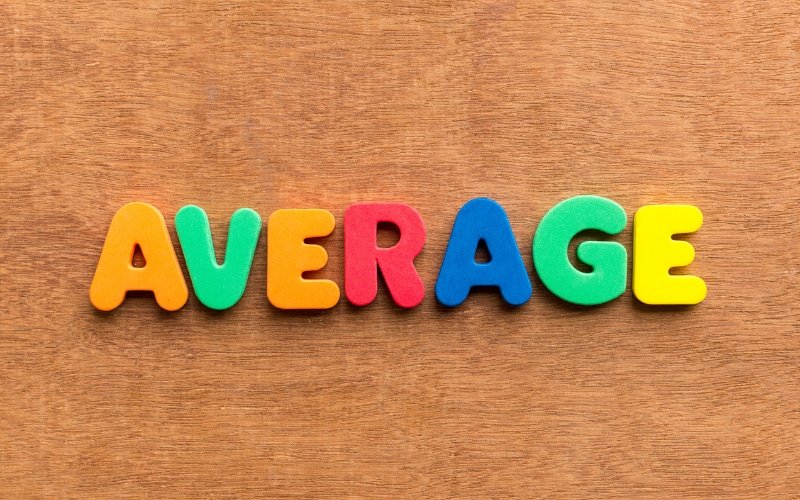Creating SEO-friendly content is a critical first step, but ongoing success depends on continuously measuring and analyzing your content’s performance. Monitoring SEO metrics helps you understand what’s working and what areas need improvement, allowing you to refine your strategy and enhance your search rankings over time.
This article outlines the key metrics and tools you should be using to measure and analyze SEO performance, ensuring that your content remains competitive in the ever-changing digital landscape.
Organic Traffic: Gauging the Success of Your SEO Efforts

Organic traffic is a critical indicator of your website’s health and the effectiveness of your SEO performance. It represents the number of visitors who land on your site through unpaid search engine results, making it a vital metric for understanding how well your content is ranking and attracting the right audience. High organic traffic reflects a strong SEO performance, demonstrating that your site’s visibility aligns with user search intent.
Why Organic Traffic Matters
Tracking organic traffic provides insights into your overall digital strategy. It’s a measure of how well your website meets the needs of your target audience and search engines. Unlike paid traffic, organic visitors often arrive with genuine interest, making them more likely to engage with your content, convert, and return. Monitoring organic traffic trends allows you to assess whether your SEO performance aligns with your marketing goals.
How to Measure Organic Traffic
Google Analytics
Google Analytics is one of the most powerful tools for tracking organic traffic. Through the “Acquisition” section, you can identify how many visitors come to your site via organic search. Key features include:
- Page Insights: Discover which pages attract the most traffic.
- Behavior Analysis: Understand how users navigate your site after arriving.
- Demographic Data: Learn about your audience’s location, age, and interests.
Regularly analyzing this data can highlight areas where your SEO performance excels and reveal opportunities for improvement.
Google Search Console
While Google Analytics tracks user behavior, Google Search Console focuses on how your site appears in search engine results. This tool provides detailed metrics on:
- Clicks and Impressions: See how many users click on your links versus how often they appear in search results.
- Average Position: Identify the ranking of your pages for specific keywords.
- Index Coverage: Ensure all your pages are indexed and accessible to users.
Using these insights, you can fine-tune your content to boost your SEO performance and improve rankings for underperforming pages.
Tracking Organic Traffic Over Time
Monitoring organic traffic trends is essential for assessing long-term SEO performance. If traffic is steadily increasing, it’s a sign that your strategies—such as optimizing for keywords, improving user experience, and earning backlinks—are working. Conversely, a decline in organic traffic may indicate algorithm changes, increased competition, or issues with your site’s content or structure.
Optimizing for Better Results
To improve your SEO performance and organic traffic, consider:
- Content Refreshing: Update old blog posts with new data and keywords.
- Technical SEO: Resolve issues like slow load times and mobile incompatibility.
- Keyword Expansion: Target additional long-tail keywords that match user intent.
Organic traffic is a dynamic metric that reflects the success of your SEO performance. By leveraging tools like Google Analytics and Google Search Console and refining your strategies, you can ensure your website continues to attract and retain high-quality visitors.
Bounce Rate: Understanding User Engagement

Bounce rate is a critical metric that reveals how effectively your website engages users. It represents the percentage of visitors who leave your site after viewing only one page. A high bounce rate can be a red flag, indicating that your content isn’t engaging or relevant to visitors. This issue often arises when the content fails to align with user expectations or doesn’t deliver on the promises made in search engine results. Moreover, a high bounce rate can negatively impact your SEO performance, as search engines may interpret it as a sign that your site doesn’t offer sufficient value to users.
Why Bounce Rate Affects SEO Performance
Bounce rate is closely tied to user behavior, and search engines like Google use this data as a ranking signal. When visitors leave your site quickly, it suggests they didn’t find what they were looking for, signaling poor user experience or irrelevant content. This can reduce your search rankings and harm your overall SEO performance. Conversely, a low bounce rate often indicates that visitors find your content helpful and are engaging further with your site, which can boost rankings and visibility.
How to Measure and Improve Bounce Rate
Use Google Analytics for Insights
Google Analytics is an invaluable tool for understanding bounce rate and how it impacts your SEO performance. Navigate to the “Behavior” section and explore reports like “Site Content” and “Landing Pages” to identify pages with high bounce rates. Focus on these pages to diagnose potential issues, such as slow load times, irrelevant content, or poor design.
- Example: If a blog post has a high bounce rate, it may need better formatting, stronger calls-to-action (CTAs), or additional internal links.
Align Content with Search Intent
Creating content that matches user search intent is one of the most effective ways to reduce bounce rate and improve your SEO performance. When visitors arrive at your site, they should immediately see content that addresses their query or provides value. Use tools like Google Search Console to analyze search terms driving traffic to your site and ensure your content aligns with those terms.
- Actionable Tip: Include clear headings and concise answers at the top of your page to quickly address user queries and keep them engaged.
Enhance Content Quality
Content that is well-written, informative, and visually appealing keeps visitors on your site longer. Add multimedia elements like images, videos, and infographics to break up text and make your content more engaging. High-quality content is not only valuable for users but also for improving your SEO performance by signaling relevance and authority to search engines.
Use Internal Links Strategically
Internal linking is a powerful strategy for reducing bounce rate and boosting your SEO performance. By guiding visitors to other related content on your site, you encourage them to explore further and stay longer. For example, if a visitor is reading a blog post on keyword research, you can link to a related article on SEO tools to extend their session.
Optimize Page Load Times
Slow-loading pages are a common cause of high bounce rates and poor SEO performance. Visitors expect websites to load quickly, and delays can drive them away before they even engage with your content. Use tools like Google PageSpeed Insights to identify and fix issues such as large image sizes, unoptimized scripts, and server response times
Average Time on Page: Measuring Content Engagement

The longer users spend on your page, the more likely it is that they find your content valuable and engaging. Average time on page is an important metric that can help you assess how well your content is holding the reader’s attention.
How to measure average time on page:
- Google Analytics: Under the “Behavior” section, you can see how long users typically stay on each page.
- Improve engagement: To keep users on your page longer, ensure your content is well-organized, easy to read, and provides value. Use multimedia like images, infographics, or videos to make your content more engaging.
Keyword Rankings: Tracking Your Visibility
Keyword rankings refer to where your website appears in search engine results for specific keywords. Tracking your rankings for targeted keywords allows you to see how your content is performing and if it’s reaching the intended audience.
How to track keyword rankings:
- Google Search Console: This tool provides insights into which keywords are driving traffic to your site and where your pages rank in search results.
- Ahrefs or SEMrush: These tools provide more in-depth keyword tracking and competitive analysis, allowing you to monitor how your keywords perform over time.
If your rankings for important keywords are dropping, it might be time to update or optimize your content to better align with search algorithms.
Backlink Growth: Building Authority
Backlinks, or inbound links from other websites, are a crucial ranking factor in SEO. High-quality backlinks signal to search engines that your content is valuable and authoritative. Monitoring your backlink growth helps you assess how your link-building efforts are progressing.
How to track backlinks:
- Ahrefs or SEMrush: These tools allow you to monitor the number and quality of backlinks pointing to your site, including new links and lost links.
- Google Search Console: It also provides information about which sites are linking to your content.
Building more high-quality backlinks can improve your site’s authority and boost your SEO performance.
Conclusion: Refining Your SEO Strategy for Long-Term Success
Measuring and analyzing SEO performance is an ongoing process that helps you refine your content and adapt to changes in search engine algorithms. By regularly tracking key metrics like organic traffic, bounce rate, average time on page, keyword rankings, and backlink growth, you can gain valuable insights into what’s working and what needs improvement.
With a data-driven approach, you’ll be able to make informed decisions that enhance your SEO strategy, keep your content competitive, and ultimately drive more traffic and conversions to your site.

